I checked out exhibitions by two completely different artists in the span of only one month. First, I went to visit the work of Llyn Foulkes at the Hammer Museum. I could not help but to give all my heart to loving his art. And just when I thought that maybe, for another decade, I would be safe as to not be hit that hard with the work of another artist, boom! There it was. I went to the Orange County Museum of Art to see the work of Richard Jackson in his exhibit , “Ain’t Painting a Pain,” and I was hit by another avalanche of absolutely great talent. Now I walk around in a daze. Don’t mind me; it happens to me when I see a beautiful movie, when I hear great music, or when I visit an art exhibition as such.
Richard Jackson’s paintings do not obey any rules or limitations. The vision of the artist expands and passes the third eye and quantum physics to the beyond where our everyday mind comes to a halt and cannot move to any further distance. That is where the artist’s starting point begins. You don’t need so many words to describe the paintings, for all you need to do is to see it and to feel it. Each one of us should see and feel the paintings for ourselves, independently, for each one of us can take it all in in different depths, according to how much we are capable to contain before we would overflow. That’s why when I love the work of an artist that much, I refuse to read any reviews in the media about him. I am afraid that if I read that they did not understand the artist in the way I did, it can really disappoint and spoil the experience for me.
From what I have learned about Richard Jackson’s work, if I ever invite him to my house, I would surely check his pockets for any paint, crayon, or color pencil. In his work, the whole room becomes his painting. You find yourself walking in it and standing in the middle of it. It is as though you are already part of his mind process for what he is trying to communicate with you with his unruly paintings. You ask yourself, “Is it really an acceptable behavior from an artist?” It’s like he is screaming at you, the viewer, “Can you hear me? Can you really hear me?” The splashes of paint are everywhere, like he has walked into the perfectly white, sterile, and polite space of the whole museum and the mind of the viewer, as well. Just when you began to trust him and you looked away, he took this opportunity to scribble and splash his paint everywhere – on the walls, on the floor, on the ceiling, on the benches. When you noticed, it is too late, for he had already revealed his heart and his mind to you and yours to yourself in the depths of its depths. At this point, all you could do is just bow to his sacred talent and make him your art god.
Richard Jackson: Ain’t Painting a Pain is the first retrospective devoted to one of the most radical artists of the last 40 years. Based in Los Angeles since the early 1970s, Jackson has expanded the definition and practice of painting more than any other contemporary figure. His wildly inventive, exuberant, and irreverent take on “action” painting has dramatically extended its performative dimensions, merged it with sculpture, and repositioned it as an art of everyday experience. Presented as a series of room-size installations—site-specific wall paintings, painted environments, monumental stacked canvases, and anthropomorphic painting “machines”—Ain’t Painting a Pain presents major works never before seen in the United States, including a sculpture that was conceived early in his career but never built and a major new work to be completed in 2012. A 350-page, full-color catalogue with essays by Dennis Szakacs, John C. Welchman, Michael Darling, Jeffrey Weiss, and Hans Ulrich Obrist will accompany the exhibition. Richard Jackson: Ain’t Painting a Pain will travel to Villa Museum Stûck in Münich and two additional European museums.
Tags: Ain't Painting a Pain, Art, Art Reviews, Artists, Llyn Foulkes, Orange County Museum of Art, Richard Jackson
Posted in Art Reviews, Reviews |


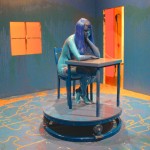

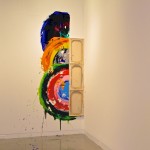
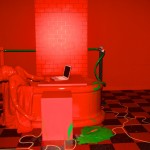
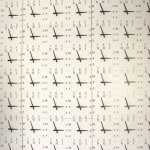
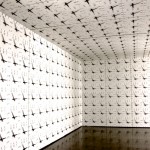
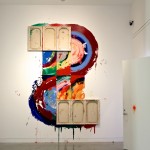
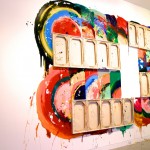


Leave a Reply